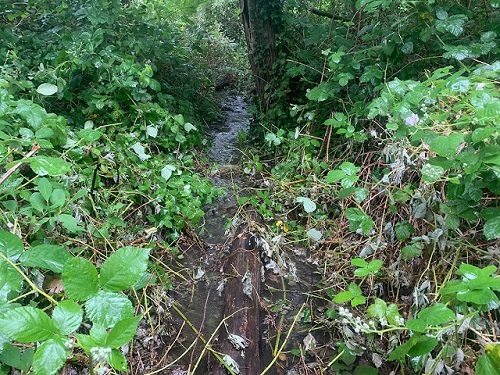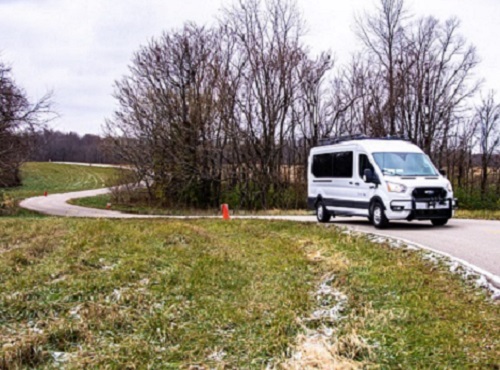FEDERAL ACTION
States Losing Gas Tax Revenue with EV Adoption – U.S. News & World Report
New Federal Cash Headed to Trail Projects Nationwide – Route Fifty
Report: How state and local leaders can harness new infrastructure funding to build a stronger, more inclusive workforce – Brookings
COVID-19
Justice Department asks court to reverse order banning airplane mask mandate to combat COVID – Reuters
INFRASTRUCTURE RESILIENCE AND SUSTAINABILITY
FHWA Memo Useful Discussion Tool, Expert Says – Transport Topics
Michigan transportation officials want electric vehicles to pay for roads – WJRT-TV
Wyoming Legislators Want to Ban EVs by 2035 – Autoweek
Mississippi River dredging makes supply transport possible amid ongoing drought – Fox Business
Should Cities Use Cooler Pavements? – Transfers Magazine
AIR QUALITY
Faith groups, environmental justice advocates urge EPA to go further in new soot pollution rules – EarthBeat
A Roadmap for Decarbonizing California In-State Aviation Emissions – International Council on Clean Transportation
A Nudge Toward Greener Flying – Transfers Magazine
ENVIRONMENTAL JUSTICE
Six Environmental Justice Policy Fights to Watch in 2023 – Inside Climate News
Transit Equity Day Family Fair – Santa Cruz Patch
Where You Go When Your Car is Home – Transfers Magazine
NATURAL RESOURCES
Virginia residents reject massive solar farm plan for third time over environmental concerns – Fox News
Reimagining Colorado’s Highways – Pagosa Daily Post
Clean Water Act fights pollution – Troy (AL) Messenger
How New York City’s Trees and Shrubs Help Clear Its Air – New York Times
Safety, wildlife crossings emerge in Highway 93 study between Lolo and Florence, Montana – KPAX-TV
CULTURAL RESOURCES
Pennsylvania and New Mexico universities score National Park Service grant to preserve Route 66 – The Architect’s Magazine
HEALTH AND HUMAN ENVIRONMENT/ACTIVE TRANSPORTATION
Salt Lake City community group demands more measures to protect pedestrians – KSL-TV
A new lane in Chicago politics? Movement for more bike infrastructure grows – Chicago Tribune
Michigan’s chief mobility officer to step down – for a year of travel – MIBiz
Maine wants to make roads safer for bikes and pedestrians – Mainebiz
Macon’s roads are becoming deadlier for pedestrians, but few hit-and-runs are solved – Georgia Public Broadcasting
What Vision Zero has done for North Dakota in 5 years – KXMA-TV
DC explores idea to photograph and fine excessively noisy vehicles – WTOP Radio
FEDERAL REGISTER NOTICES
Notice of Funding Opportunity for the Rural Business Development Grant Program To Provide Technical Assistance for Rural Transportation Systems for Fiscal Year 2023 – Rural Business Cooperative Service (Notice)
Water Resources Development Act of 2022 Comment Period and Stakeholder Sessions – Army Corps of Engineers (Request for comments; announcement of stakeholder sessions)
National Wetland Plant List – U.S. Army Corps of Engineers (Notice)
Revised Definition of ‘‘Waters of the United States’’ – EPA (Final rule)
Finding of Failure To Submit State Implementation Plan Revisions Required Under Clean Air Act Section 185; California; Sacramento Metro Area – EPA (Final action)
Air Plan Approval; California; San Diego County Air Pollution Control District – EPA (Final rule)
Clean Air Act Advisory Committee: Request for Nominations – EPA (Notice)
Water Resources Policies and Authorities: Navigation Policy: Cost Apportionment of Bridge Alterations – Army Corps of Engineers (Final rule)
Notice of Meeting of the Transit Advisory Committee for Safety – FTA (Notice of public meeting)
Approval of Teterboro Airport Noise Compatibility Program – FAA (Notice)
Proposed Lake Ontario National Marine Sanctuary; Notice of Proposed Rulemaking – Office of National Marine Sanctuaries (Notice)
Evaluation of New York State Coastal Management Program; Notice of Public Meeting; Request for Comments – Office for Coastal Management (Notice)


